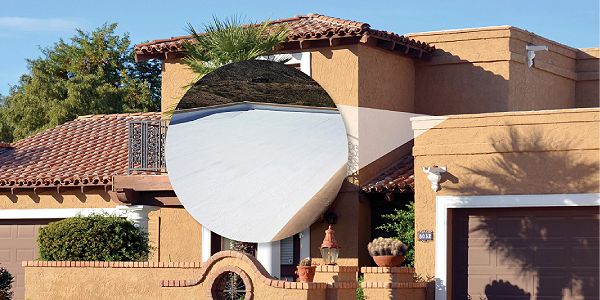NASA Turns its Eyes to the Roof for Ways to Beat the City Heat

By Cass Jacoby, RCS Reporter.
With urban heat as a growing issue in cities, NASA researchers look into the efficacy of green roofs as a solution.
It is summertime in the city, and while plenty of us are rejoicing in the sunny weather, we are also lamenting that there is no escaping the heat. While the trend of record-breaking heat can be directly tied to climate change, it is also important to recognize how urbanization plays a role. This is due to the urban heat island effect, where heat is intensified and amplified by all of the asphalt and concrete that retains and absorbs the heat. Temperatures are often worse in neighborhoods with fewer green spaces, and according to a research article, disproportionately affect older adults, low-income communities and some communities of color.
It is imperative that we find a solution to the growing temperatures of cities, which is why NASA researchers have been turning their gaze from the galaxy to the roof. For the past several decades, researchers have looked into replacing the black tar, or dark-colored roofing materials, of the past with bright, sun-reflecting surfaces or “green roofs.” Now, scientists are using satellite data to measure how effective these changes are.
“As cities grow and develop, they need to make good decisions about their infrastructure, because these decisions often last for 30 or 50 years or longer,” climate scientist and civil engineer at Columbia University and GISS Christian Braneon tells NASA. “In the context of more frequent heat waves and more extreme heat, it’s important to understand how these urban design interventions can be effective.”
According to research from climate scientists at NASA’s Goddard Institute for Space Studies (GISS) green roofs can harness the cooling power of plants to lower the temperatures of cities.
The GISS team installed green roofs in three locations in Chicago in the early 2000s: Millennium Park, City Hall and a Walmart shopping center. The objective was to determine how green roofs affected the surface temperatures. Using imagery captured by the Landsat 5 satellite between 1990 and 2011, the researchers compared changes in land surface temperatures and vegetation abundance at the study sites as well as nearby control sites without green roofs.
As published in Sustainable Cities and Society, two of the three green roofs reduced temperatures, and the effectiveness of a green roof might be dependent on other factors like location and plant diversity.
The results are mixed, as can be expected with such a small sample size. The Millennium Park location, which featured an intensive mix of plants and is located near Lake Michigan, was the only site where the roof fully mitigated climate warming over the study period, showing significantly lower average temperatures. While temperatures on other sites were lower after the green roof installation compared to the control sites without green roofs, they trended towards higher temperatures at the end of the study period.
Ultimately, the study found that the benefits of green roofs depend on a variety of factors — from the geographic region and plant diversity to rooftop structure and the cooling efficiency of the building itself. More studies will be needed to tease out the details of how to fully mitigate rising heat in cities, however this study represents a promising start.
That being said, there is already a significant amount of data demonstrating the additional benefits ofgreen roofs including:
-
Urban heat island mitigation
-
Thermal insulation with reduced building energy costs
-
Stormwater runoff retention
-
Increased roof service life
-
Biodiversity and ecosystem restoration potential
-
Sound insulation
-
Increased property amenity
“Traditionally, civil engineers and urban planners assumed a stationary climate,” Christian tells WITN. The purpose of the study was less to uncover the benefits of a green roof than to highlight the effects of civil engineering and urban planner’s decisions on the temperature of the city. “The whole practice is built on the premise that we can look at the past to assess risk in the future. Everything is being flipped on its head due to climate change, so I’m hoping to do more work that changes this practice.”
With GlobalChange.gov predicting urban heat island effects to intensify as Earth’s climate warms, it is becoming more important than ever that we understand these variables. With more studies showing the effectiveness of the roofing system, now marks the time for roofing contractors to help combat the effects of climate change.
Stay up to date with the latest roofing industry news when you sign up for the RCS Week in Roofing e-news.
Photo credit: NASA's Scientific Visualization Studio / Greg Shirah























Comments
Leave a Reply
Have an account? Login to leave a comment!
Sign In